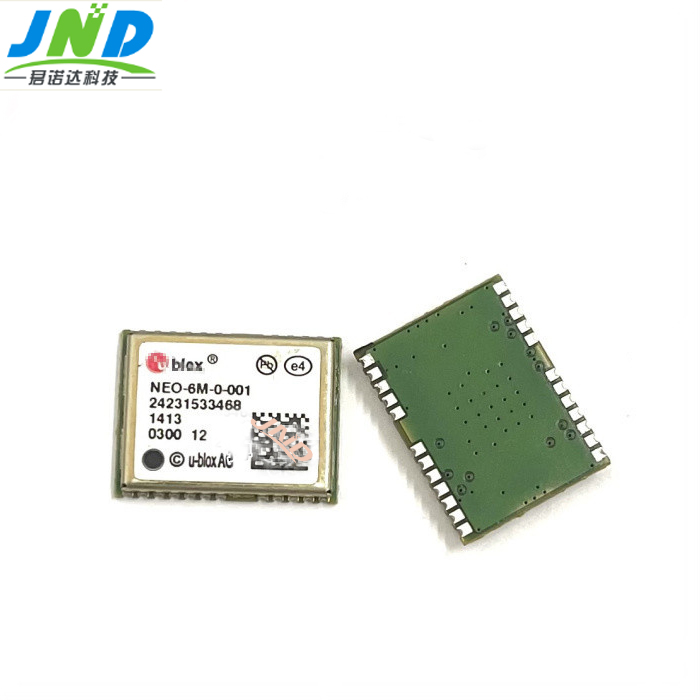Inertial Navigation System (INS, Inertial Navigation System) It is an independent navigation system that utilizes inertial sensitive devices, reference direction and original position information to determine the position, direction and speed of the carrier in inertial space, also known as inertial navigation.
The development process of inertial navigation technology
The first generation of inertial navigation technology refers to the inertial technology more than 1930 years ago laid the foundation for the development of the entire inertial navigation. Newton's three laws have become the theory of inertial navigation.
The second generation of inertial technology began in the last century 40 In the early stage of rocket development, its research content was expanded from inertial instrumentation technology to the application of inertial navigation systems.
70 At the beginning of the 20th century, some new gyroscopes, accelerometers and corresponding inertial navigation systems appeared in the development stage of the third generation of inertial technology, and its research goal was to further improve the INS The inertial technology has been popularized and applied through a variety of technical channels.
Currently, inertial technology is in the fourth generation development stage, and its goal is to achieve high accuracy, high reliability, low cost, miniaturization, digitization, and a wider range of navigation systems.
For example, with the rapid development of quantum sensing technology, the small nuclear magnetic resonance gyroscopic inertial measurement device constructed by using atomic magnetic resonance properties has the advantages of high precision, small size, pure solid state, insensitive to acceleration, etc., which has become one of the research hotspots of the new generation of gyroscopes.
Composition of inertial navigation
Inertial navigation includes two parts: inertial measurement unit (IMU) and calculation unit. The IMU senses the change information of the direction and attitude of the object through various conversion and compensation calculations to obtain more accurate information. For example, it detects the initial position, initial direction, initial posture and the next moment change of direction and angle of the object, and then adds these information together to calculate the current direction and position of the object.
IMU it mainly consists of accelerometers and gyroscopes, which can detect the direction of the object's center of gravity, pitch angle, yaw angle and other information in real time.The amount and accuracy of IMU measurement information can be improved accordingly.
The calculation unit is mainly composed of three parts: attitude solving unit, integration unit and error compensation unit.
The working principle of inertial navigation
The purpose of inertial navigation is to realize autonomous navigation, i.e., not relying on external information such as satellite signals and Arctic guides. So how is inertia realized?
The core principle of inertial navigation is to calculate one's current direction from one's own movement trajectory in the past. The technical principle of its work is nothing more than the following three basic formulas: distance = velocity x time, velocity = acceleration x time, and angle = angular velocity x time.
First, the initial information is detected (or set), including initial position, initial direction, initial pose, etc.
Then, the IMU is used to always detect the change information of the object motion. Among them, the accelerometer measures acceleration a=F/M with the principle, measures the linear acceleration of the object, and then multiplies the time to get the velocity, and then multiplies the time to get the displacement to determine the position of the object; the gyroscope measures the angular rate of the object, and scores the angular rate with the initial direction of the object as the initial condition, and then always gets the current direction of the object; and the e-compass can confirm the direction of the object in the horizontal position. These three sensors can correct each other to obtain more accurate attitude parameters.
Finally, the attitude solution, acceleration integration, position calculation and error compensation are realized by the calculation unit, and finally accurate navigation information is obtained.
The main advantages of inertial navigation system
1. Completely relying on the movement carrier to complete the navigation task independently, not relying on any external input information or output information to the outside of the independent system, with a high degree of anti-interference and concealment;
2. It is not restricted by meteorological conditions and can work in all-weather, all-weather and all-geography. The inertial guidance system can be operated anytime and anywhere without the need of specific time or geographical factors;
3. provide many parameters, for example, GPS satellite navigation can only provide position, direction and speed information, but inertial guidance can also provide posture and direction information;
4. high update rate of navigation information, short-term accuracy and stability. The current common GPS update rate is once per second, but the inertial guidance rate can reach several hundred times per second or even higher.
The main disadvantages of inertial navigation system
1. The navigation error will increase over time as time goes by.
2. Long initial alignment time before each use. Inertial navigation requires initial alignment, which is complex and takes a long time to align;
3. cannot give time information;
4. precise inertial guidance systems are expensive, usually between several hundred thousand and several million dollars.
Classification of inertial navigation
Inertial guidance can be categorized into two types: platform inertial guidance system and Jetlink inertial guidance system.
Platform inertial navigation system has a physical platform, gyroscope and acceleration by the gyroscope set on the platform, tracking the navigation coordinate system, realize the speed and position solution, attitude data directly from the platform of the ring frame.
As the platform inertial guidance system frame can isolate the angular vibration of the motion carrier, the instrument working conditions are good, the original measurement value is collected accurately, the platform can directly establish the navigation coordinate system, the calculation is small, and it is easy to compensate and correct the output of the instrument, but the structure is complicated, the volume is large, the cost is high, and the reliability is poor.
Jetlink inertial navigation system has no physical platform. Gyroscopes and accelerometers are directly fixed and mounted on the motion carrier. Essentially, the virtual inertial platform is calculated by the gyroscope, and then the accelerometer measurements are rotated to the virtual platform, and then the navigation parameters are solved.
The Jetlink inertial navigation system is simple in structure, small in size, and easy to maintain, but the gyroscopes and accelerometers have poor working conditions and low accuracy of the original measured values. Meanwhile, the accelerometer of Jetlink inertial guidance outputs the acceleration weight of the carrier coordinate system, which needs to be converted to the acceleration weight of the navigation coordinate system through the computer with a large amount of calculation, and it is easy to produce additional errors in the navigation solution correction, startup and alignment conversion. Generally speaking, the accuracy of Jetlink inertial guidance is lower than that of platform inertial guidance, but with good reliability, convenient realization and low cost, it is the mainstream technology of civil inertial guidance at present.
Main applications of inertial navigation
The inertial navigation industry first started in the military field such as aerospace, aviation, guided weapons, ships, fighter jets and so on. With the development of electronic technology and the mining of commercial value, the application of inertial navigation technology has been extended to civilian fields such as vehicle navigation, rail transportation, tunneling, firefighting positioning, indoor positioning, etc., and is even widely used in unmanned aerial vehicles, automated driving, and portable positioning terminals (e.g., smart phones, child/elderly positioning trackers, etc.).
The inertial guidance system provides position, velocity, pose (heading angle, pitch angle, roll angle) and other information for the motion carrier. Different application areas have different requirements on the performance of inertial components and inertial guidance accuracy.
In terms of accuracy, the aerospace and rail transportation fields require high instant positioning accuracy and long continuous working time; in terms of system life, spacecraft such as satellites and space stations have the highest requirements because they cannot be replaced or maintained after launching and lifting off the ground; fields such as those involved in military applications require high reliability; for civil fields such as vehicle navigation, indoor localization, unmanned aerial vehicles, and automated driving, the inertial guidance system's cost-effective performance requirements are higher. High.
Generally speaking, due to the error accumulation of the inertial guidance system and the prerequisite requirement of initial calibration, it can only be used as other main positioning and navigation technologies (such as GNSS positioning, UWB positioning, WLAN auxiliary positioning, geomagnetic positioning, etc.). , such as vehicles in the GPS in the navigation process, the loss of GPS in the signal, you can use their own acceleration and gyroscope for inertial navigation.
Therefore, it is necessary to select the inertial guidance components and navigation algorithms according to the application requirements of specific industries.

Ltd. specializes in high-precision GNSS modules and wireless communication products, technology development and application promotion service providers, relying on the wireless communication technology in the field of R & D and promotion of experience, JUNODA set up a team with a wealth of experience in hardware and software development technology, aimed at domestic and foreign OEM / ODM customers and system integrators to provide high-quality, high-performance wireless modules and applications! We aim to provide high-quality, high-performance wireless modules and application programs to OEM/ODM customers and system integrators at home and abroad, and create long-term value for customers!
The company mainly provides integrated antenna module, dual-frequency high-precision module, single-frequency high-precision module, thousand-seeking high-precision module, Zhongke micro-positioning module, U-BLOX positioning module, SICOM communication module, inertial navigation DR module, UWM GNSS module, RTK differential module, 4G communication module and high-precision antenna, etc., the products are sold well in Beijing, Shanghai, Shenzhen, Guangdong, Jiangsu, Zhejiang, Sichuan, Hunan and other parts of the country. Our GNSS modules are widely used in many application fields, such as drones, vehicle security monitoring and dispatching, automatic bus stop announcement, DVR, car DVD navigation, GPS electronic dog, synchronized timing, high-altitude balloon monitoring, engineering machinery, industrial automation, etc. In the field of wireless communication products, the company is closely involved in the field of wireless communication, such as RTK differential module, 4G communication module and high-precision antenna.
In the field of wireless communication products, the company follows the latest development of international communication technology, introduces and acts as an agent for wireless communication modules that meet the market demand, and the products have a comprehensive layout from 2G, 3G, 4G, and are widely used in financial electronic payment, vehicle remote control, remote advertising information, repeater monitoring, mobile Internet terminals, smart home, remote medical care, network testing, enterprise information management, anti-theft alarm, Remote video transmission, intelligent meter reading, mobile computing, network navigation, voice phone, wireless gateway and other fields. Focused areas include video surveillance, network optimization, routers, POS and other M2M industry applications.
If you need to consult, please contact online customer service!














